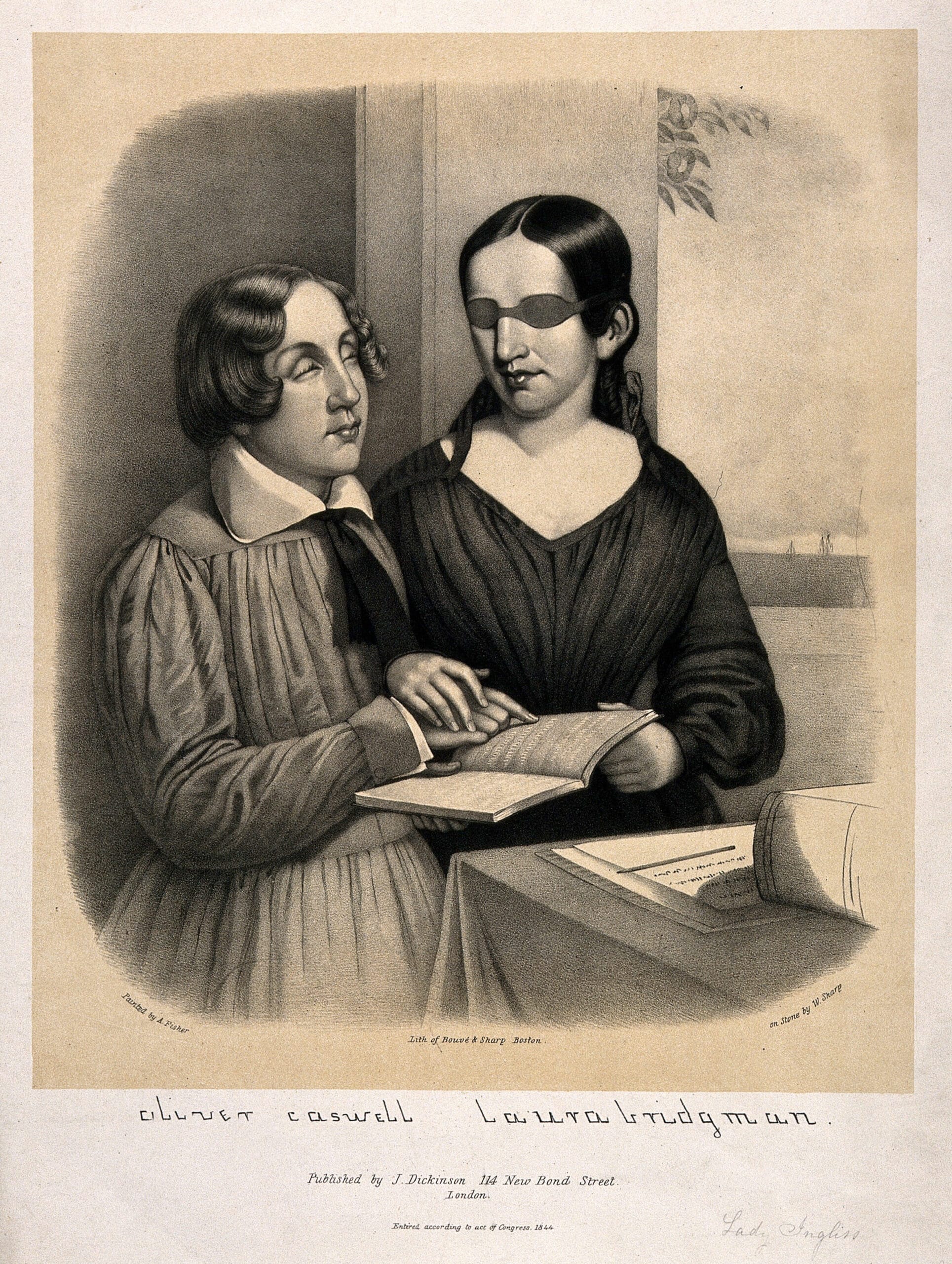Let’s chat about Laura Bridgman, an amazing woman who broke down barriers for people who are deaf and blind. At the Perkins School for the Blind, she became the first person in the English-speaking world with both disabilities to learn to read and write. Her story shows that even when faced with challenges, anything is possible.
A Life Defined by Courage and Determination
Imagine a life without the ability to see the sunrise, hear music, or smell freshly baked bread. This was the reality for Laura Bridgman, a remarkable woman who defied incredible odds to live a meaningful and inspiring life. Born in 1829, Laura’s world was plunged into darkness and silence at the tender age of two when scarlet fever stole her sight, hearing, smell, and taste. This could have easily been the end of her story, but Laura’s spirit was indomitable.
[https://www.lolaapp.com/leatherback-sea-turtle-mouth]
A Revolutionary Approach to Education
Enter Samuel Gridley Howe, a visionary educator who believed in the potential of every child, regardless of their challenges. In 1837, Laura, just seven years old, arrived at the Perkins School for the Blind, led by the compassionate Dr. Howe. He saw a spark in Laura, a thirst for knowledge that transcended her physical limitations.
Dr. Howe embarked on a groundbreaking journey to teach Laura language, a feat many considered impossible. He patiently introduced her to a world of words through touch, using raised letters and embossed objects. Imagine feeling the shape of a doll and then learning to associate that shape with the letters D-O-L-L. This is how Laura learned, her fingers becoming her eyes, her mind a sponge eagerly soaking up knowledge.
Triumph Over Adversity
The world watched in awe as Laura blossomed. She devoured books, her fingers tracing the words, her mind creating images and emotions from the stories they held. She learned to write, her thoughts flowing onto paper through the tip of a specially designed stylus. Laura’s triumph wasn’t just about learning to read and write; it was about breaking down barriers and proving that the human spirit could overcome even the most daunting obstacles.
Laura’s story became a beacon of hope for others facing similar challenges. She showed the world that disability did not equate to inability. After graduating from Perkins, she became a skilled seamstress and crocheter, supporting herself and inspiring others with her independence.
A Legacy of Hope and Inspiration
Perhaps most importantly, Laura’s journey paved the way for future generations of deafblind individuals, including the iconic Helen Keller. Laura’s story showed what was possible, igniting a fire of hope and determination in those who followed in her footsteps.
Today, Laura Bridgman’s legacy continues to shine brightly. Her story is a testament to the power of perseverance, the importance of education, and the boundless potential that resides within each and every one of us. Laura’s life reminds us that limitations are often self-imposed and that with courage, compassion, and belief in ourselves, even the seemingly impossible can be achieved.
Unveiling the Mystery: Why Did Laura Bridgman Cover Her Eyes?
Laura Bridgman, celebrated for her incredible breakthroughs in deaf-blind education, often wore a green ribbon over her eyes. This wasn’t a fashion choice; it was likely a gesture of courtesy, a way to navigate the social anxieties surrounding disability in the 19th century. Imagine living in a time when differences were often met with discomfort and even fear. That was Laura’s reality. Her covered eyes serve as a poignant symbol of the stark contrast between her remarkable abilities and the social limitations placed upon her.
The green ribbon serves as a powerful artifact, a tangible reminder of how far we’ve come in understanding and accepting disability. While Bridgman’s education and the progress she represented were revolutionary, the fact that she felt compelled to hide her blindness presents a complicated picture of inclusivity, especially during a time often hailed as a period of advancement.
Navigating Social Stigma in the 19th Century
Laura Bridgman’s life unfolded against a backdrop of deeply ingrained societal biases about disability. In the 1800s, disabilities were often viewed as something shameful, something to be tucked away from public view. This attitude extended to anyone perceived as different, including those who were blind, deaf, or had other disabilities. It wasn’t about individual merit; it was about fitting into a very narrow definition of normalcy.
Within this social climate, Laura was expected to cover her eyes with that green ribbon whenever she was in public. Some might argue that it was a way to protect others from the supposed discomfort of seeing her blindness. However, this practice truly underscores the prevailing stigma and unease surrounding disability during that era. Imagine the pressure of constantly having to subdue a part of yourself just to be accepted.
A Symbol of Courtesy and Constraint
That green ribbon, then, becomes a complex symbol. It represents courtesy, yes, a way for Laura to adapt to the rigid social norms of her time and avoid making others uncomfortable. But it also serves as a stark reminder of the invisible barriers people with disabilities faced in the 19th century.
Despite these hurdles, Laura’s story is one of remarkable resilience and triumph. She wasn’t just a recipient of groundbreaking education; she was a trailblazer who proved to the world that people with disabilities could achieve incredible things. Her accomplishments didn’t just influence her own time; they paved the way for generations of deaf-blind individuals, including Helen Keller, who considered Bridgman a true inspiration.
Yet, Laura’s story also prompts us to reflect. It reminds us of the ongoing work needed to create a truly inclusive society, a society that values and celebrates differences rather than shying away from them. It’s about challenging our own preconceptions and working towards a world where everyone feels seen, heard, and respected for who they are, regardless of their abilities.
A Shared Legacy? Did Laura Bridgman Know Anne Sullivan?
We know that Laura Bridgman and Anne Sullivan both spent time at the Perkins School for the Blind. Laura, remember, was the first deafblind American child to learn language. She was a real trailblazer, and her time at Perkins with Dr. Samuel Gridley Howe was like a revolution in deafblind education. Later, Anne Sullivan arrived at Perkins as a student herself.
Now, here’s the thing. We don’t have any solid evidence that Laura and Anne actually met or interacted directly. There’s no smoking gun, like a diary entry or letter, that says, “Hey, I had tea with Laura today.” But, and this is a big but, picture this: Perkins School for the Blind wasn’t a gigantic place. It was a pretty tight-knit community. It’s highly probable that Laura, being this incredible success story, was kind of a legend around there.
It’s highly likely that Anne, even if she didn’t know Laura personally, would have at least heard stories about her. After all, Laura’s journey was a source of hope and inspiration for everyone involved in deafblind education.
And here’s something else to consider. When you look at the methods Anne Sullivan used to teach Helen Keller, they closely mirrored the ones used with Laura Bridgman. This suggests that Laura’s educational experience significantly influenced the field and likely played a role in shaping Anne’s approach.
Even if they didn’t directly interact, their stories are intertwined. Laura paved the way, breaking down barriers and proving that deafblind people could learn and thrive. Anne then took up the mantle, using what had been learned from Laura to help Helen Keller achieve her own incredible success.
It’s a powerful reminder that even if we don’t always know all the connections, the work of one person can have a ripple effect, inspiring and influencing others in ways they may never fully realize.
Beyond Barriers: Why is Laura Bridgman Famous?
Imagine a young woman in the 1800s named Laura Bridgman. Now, picture her world turning upside down when scarlet fever, a serious illness at the time, took away her senses. She couldn’t see, hear, smell, or even taste. It’s hard to even fathom, right? That’s what made Laura’s story so incredible.
Instead of giving up, Laura’s inner strength shone through. In 1837, she arrived at the Perkins School for the Blind. There, she met a teacher named Samuel Gridley Howe, who had a hunch – he believed Laura could learn, even without her senses.
Howe was a bit of a pioneer. He came up with new ways to teach, using things like raised letters Laura could feel, finger spelling, and objects she could touch to understand the world around her.
And guess what? It worked! Laura’s mind, like a sponge, soaked up knowledge. She learned to read and write, becoming quite the conversationalist, even diving deep into philosophical topics.
Laura’s accomplishments were groundbreaking. Back then, people thought those with severe disabilities couldn’t learn. Laura proved them wrong, showing the world that limitations were often self-imposed. People were amazed, even famous folks like the author Charles Dickens. He visited Laura at Perkins and was blown away by her strength and dedication.
Laura’s story reminds us that the human spirit is unbelievably resilient and that education can truly be life-changing. She set a powerful example that continues to inspire people today.
Key Points about Laura Bridgman’s Life and Legacy:
- Early Challenges: Laura Bridgman lost her sight, hearing, smell, and taste at age two due to scarlet fever.
- A Revolutionary Teacher: Dr. Samuel Gridley Howe believed in Laura’s potential and taught her language through touch, using raised letters and embossed objects.
- Literacy Triumph: Laura defied expectations and became literate, reading and writing despite her disabilities.
- Breaking Down Barriers: Her triumph challenged societal norms and proved that disability does not equate to inability.
- Independence and Inspiration: She became a skilled seamstress and crocheter, supporting herself and inspiring others with her independence.
- A Legacy for Future Generations: Laura’s story became a beacon of hope for future generations of deafblind individuals, including Helen Keller.
- Enduring Lessons: Her legacy highlights the power of perseverance, the importance of education, and the boundless potential within individuals.
- Challenging Limitations: Laura’s life reminds us that limitations are often self-imposed and can be overcome with courage, compassion, and belief.
















